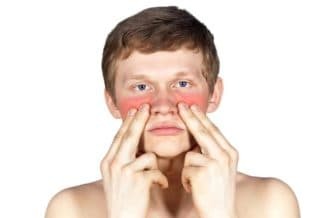
Polyposis of the nose - a disease of the upper respiratory tract among children under 10 years old. It is expressed in the formation on the mucous membrane of the nose of small growths, which, although benign, can cause a lot of trouble to its owner. The shape of the neoplasm may be different - round and oblong, flat and on the stem. Polyps like to "settle" not only in the nasal passages, but also in the frontal, maxillary, latticed and sphenoid sinuses.
What are the symptoms of polyps in the nose, you can learn from the article.
Contents
- 1 What causes
- 1 What causes
- 2 Symptoms and Diagnosis
- 3 Treatment
- 4 Traditional medicine
- 5 Prevention
- 6 Opinion of Dr. Komarovsky
What causes

Modern medicine does not have an exact answer to the question "why do polyps arise?". But among the factors that can contribute to their formation, the following are present:
- frequent allergic diseases( bronchial asthma, allergic rhinitis, dermatitis, pollinosis);
- mucovoscidosis is a genetic disease that causes functional disorders of the respiratory, musculoskeletal, endocrine systems, as well as disorders of the secretory activity of the organism;
- chronic diseases of the upper respiratory tract - sinusitis, sinusitis, rhinitis;
- anatomical features of the structure of the nose: curvature of the nasal septum, too narrow nasal passages;
- hereditary predisposition;
- Cherdja-Strauss syndrome is a disease in which small vessels carrying blood supply to the nose suffer;
- fungal infection.
How the treatment of polyps in the nose celandine, you can learn from the article.
Symptoms and Diagnosis

The main problem of polyposis is that in the early stages of the disease does not make itself felt. When a child lays his nose, he begins to "sniff", sneeze, breathe with his mouth open, most parents take it for a cold and begin to independently conduct appropriate treatment - rinse and bury their nose. But the treatment does not help, and the symptoms not only do not pass, but also intensify. After some time, these problems are added to sleep disorders, headaches, decreased tone.
During the examination, the doctor discovers nodules in the nasal passages of the baby and makes a diagnosis - polyposis of the nose. If the neoplasms can not be visually detected, X-rays can be assigned for diagnostic purposes. Endoscopy is also used to diagnose the disease - it most objectively helps to determine the extent of the lesion, its "landscape" and the degree of patency of the nasal passages. To see if the paranasal sinuses are affected by the disease, computed tomography is used.
From the article you can learn how to treat polyps in the nose without surgery.
The patient is assigned the following laboratory tests:
- general and biochemical blood test;
- test for mukovoscidosis;
- in rare cases - cytology( to exclude suspicion of malignant neoplasm).
What happens if the disease is not diagnosed on time and run? Polyposis of the nose has three stages. On the first growths overlap the upper part of the nasal passage. At the second there is a gradual growth of tissues, which cover most of it. The third, the most difficult stage, is the complete overgrowth of the cavities. The sooner the treatment begins, the faster and easier it is to defeat the disease without consequences. Otherwise, the lack of oxygen will begin to affect the child's mental development and progress, and constant difficulties with nasal breathing and a slightly open mouth will provoke inflammatory diseases of the nasopharynx - sore throats, laryngitis, pharyngitis, sinusitis, etc.
Over time, the disease will affect the appearance of the patient: the polyps contribute to the displacement of the nasal bones and the extension of the nose, nasolabial folds are smoothed out, and the constantly open mouth gives the patient a characteristic "polypous" expression. The voice becomes deaf and nasal, the hearing will be affected. In the most neglected cases polyposis can have a negative impact even on the development of the baby's chest, the same applies to the dentoalveolar system.
What causes mucus in the nasopharynx may be present is indicated in this article.
In the photo - the location of polyps in the insertion: 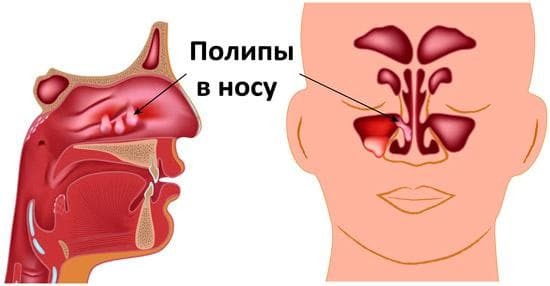
Treatment of
Depending on the degree of the disease, you can get rid of polyps conservatively or surgically. At the initial stages of treatment it is important to establish the cause of the disease and eliminate it. If this is not done, then the disease most likely recurs.
This article describes how to clean the nasopharynx from mucus.
Therapeutic methods include:
- saline inhalations , the purpose of which is to purify mucous membranes from pus and allergens, as well as reduce edema and inflammatory infiltration;
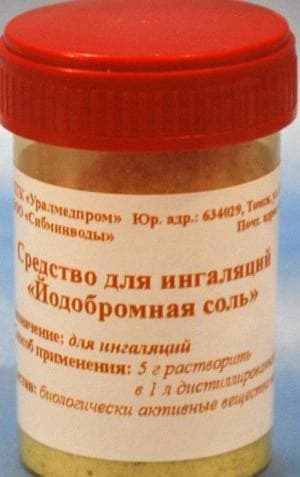
- ultraviolet ( dries the mucous membrane and neutralizes inflammation foci);
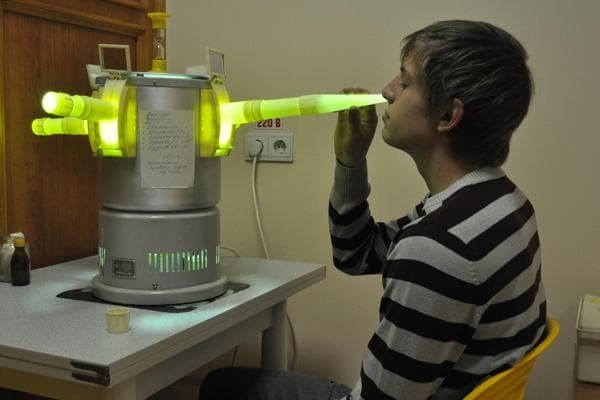
- turundas with extracting and healing ointments;
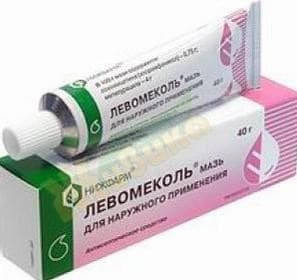
- laser therapy , which helps normalize lymph and blood flow and restores tissue nutrition;

- nasal corticosteroids : Triamcinolone, Fluticasone, mometasone, budesonide;
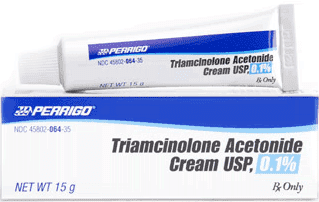
- preparations that suppress allergy : Alerone, Eryius, Lortadine;
- moxibustion at temperature 60-70 ° C( after this method of exposure, polyps fall away for a few days and are easily removed by blowing or a cotton swab).
What to do when the baby has bloody crusts in his nose, you can find out by reading the article.
What if the conservative treatment did not help at all or did not have sufficient effect? In this case, surgeons who perform a polypectomy, or a small operation to remove polyps , are urged to help. It is performed with the help of polypous loop( Lange hook), laser or endoscope. The latter method is the most accurate and effective, after which complications and relapses occur much less often. Parents should not be afraid - the times when the growths were removed to live, fortunately, remained far behind, and today the operation is conducted under general anesthesia.
To ensure that the postoperative period has passed without complications, the patient should wash the nasal cavities with sprays for 10-14 days:
- Saline,
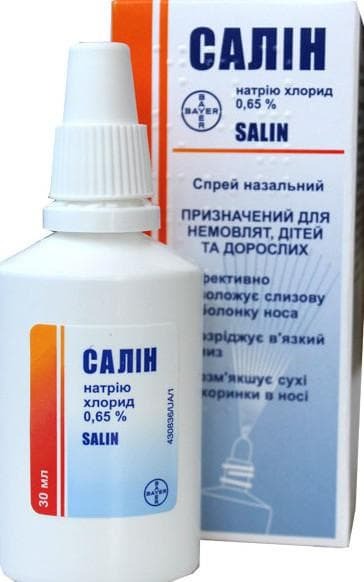
- Aquamaris,

- Humer.
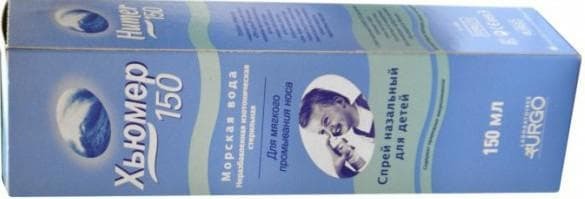
The use of self-prepared solutions during this period is contraindicated due to the need to observe sterility. After each rinsing, the spout of the vial is treated with hydrogen peroxide. Anti-relapse treatment is a three-month course of corticosteroid drugs. Once every three months, the child should be shown to the otolaryngologist.
What are the causes of edema of the nose without a runny nose, you can find out by reading this article.
Traditional medicine
At an early stage of the disease and only with the permission of the doctor it is possible to combine therapeutic treatment and folk methods. For this, herbal infusions, honey, propolis are used. Your attention is offered several recipes:
| Active substance | Procedure |
| Honey | Dip the cotton swab into honey and lubricate the mucous membranes of the nose from the inside. Repeat 3 times a day for a month. Honey should be fresh, in no case not candied, preferably a May harvest. Often this procedure promotes complete resorption of polyps or a decrease in their number. |
| Propolis | Place a small amount of propolis in a stainless saucepan and heat it over a small fire. After the appearance of smoke remove the dishes from the fire, make sure that the smoke does not burn, but gently warms, and give the child breathe them. Inhale evaporation should be alternately - first one nostril, then the second. |
| Purity of | Juice freshly brewed plants 1-2 drops 3 times a day. This procedure helps to dry the malignancy. Infusion of dry celandine can be used to wash the nasal sinuses( 1 tbsp. Spoonfuls per cup of boiling water, to insist for about an hour). |
Natural remedies can not completely replace medicines. In no case should you engage in self-medication and ignore the appointment of a doctor.
What are the best drops from the common cold and nasal congestion most often applied, you can learn from this article.
Prevention of
All parents who have undergone conservative or surgical treatment of polyposis in their baby should observe a special regimen. First of all, it means protecting the child from all possible allergens - pollen of plants, household dust, household chemical vapors and, of course, cigarette smoke. It is necessary to observe daily hygiene of a nose - to clear and wash it with saline solutions or sprays.
The patient is also shown a diet: he will have to give up spicy and salty foods, fast food, carbonated drinks, brightly colored jelly sweets, chocolate, cocoa, coffee. Fresh juices, mineral water, vegetable oils, protein products( fish, meat, beans) are recommended. Fresh berries and fruits are useful( if they do not cause the child to have an allergy).
Which nasal sprays with vasomotor rhinitis are best used, is indicated in the article.
The daily routine is of great importance - frequent walks in the fresh air, gymnastics, exercise, swimming, massages - everything that strengthens immunity. At home, you can perform a massage located near the sinuses of the nose of the trigeminal nerve, which is responsible for the effective work of the respiratory organ. Attach the pads of your fingers to the place of its location, gently press it ten times, then rotate in one direction and then the other side( also 10 times).
Opinion of Dr. Komarovsky
Speaking about the nose polyposis in children, the Kharkov pediatrician Evgeny Komarovsky emphasizes the parents' attention to the fact that this disease in the first stages can and should be treated with mild therapeutic methods after the exact establishment of the causes that caused it. The administration of topical corticosteroids( Flunisalide, mometasone, beclomethasone) in the case of young patients is justified only when polyps cause serious anxiety and interfere with the full breathing, and also affect the child's mental development. For systemic internal use, the doctor can prescribe Prednisone( 40-60 mg / day for a week).Surgical intervention is indicated only in cases when drug treatment did not give a positive result.
What good baby drops from nasal congestion is best to use, you can find out by reading this article.
The human nose is an important organ that functions: it warms the air that enters the lungs, acts as a barrier to disease-causing viruses, and helps saturate the brain with oxygen. Unfortunately, we often do not attach enough attention to the diseases associated with it, hoping for "maybe" and the body's ability to self-repair.
This negligence is the cause of serious consequences, so if symptoms of a common cold trouble you longer than 7-10 days, be sure to show the baby to the doctor.

